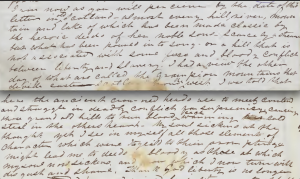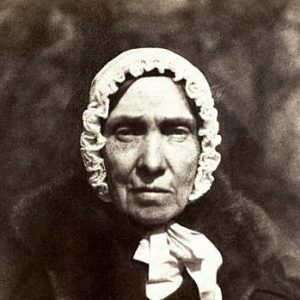Some websites of related interest, including electronic texts. Books and articles on Douglass and his visit of 1845-47. Other sources of primary materials.
Websites
General sites on Frederick Douglass:
- Frederick Douglass National Historic Site (Washington, DC).
- Frederick Douglass. Wikipedia entry.
- The Frederick Douglass Papers. A guide to the holdings in the Library of Congress.
- Frederick Douglass in Britain. Rich compendium of resources by Hannah Murray.
Electronic Texts:
- Frederick Douglass, Autoboigraphy of Frederick Douglass, American Slave (1845) . His first autobiography.
- Frederick Douglass, My Bondage and My Freedom (1855). His second autobiography, which includes an account of his visit to Britain and Ireland in 1845-47.
- Frederick Douglass, The Life and Times of Frederick Douglass(1881). His third autobiography.
- William Wells Brown, Three Years in Europe (1852).
- William Wells Brown, An American Fugitive in Europe (1855).
- Samuel Ringgold Ward, Autobiography of a Fugitive Negro(1855).
- Elsewhere on this website you may find contemporary documents relating to Douglass’ outward voyage in 1845 and return voyage in 1847.
On Walter Scott:
- The Walter Scott Digital Archive. Online resource produced by Edinburgh University Library. Includes useful Untangling the Web: Scott on the Internet.
Books and Articles
Writings and Speeches by Douglass
- John W Blassingame (ed), The Frederick Douglass Papers. Series One: Speeches, Debates and Interviews. Volume 1: 1841-1846 (New Haven and London: Yale University Press, 1979). Includes the text of 19 speeches made in Scotland 1846-47.
- Philip Foner (ed), The Life and Writings of Frederick Douglass. Volume 1: Early Years, 1817-1849 (New York: International Publishers, 1950). Includes letters written in Scotland 1846.
On Douglass
- Benjamin Quarles, Frederick Douglass (Washington, DC: Associated Publishers, 1948).
- Philip S Foner, Frederick Douglass: A Biography (New York: 1964).
- Nathan Huggins, Slave and Citizen: The Life of Frederick Douglass (Boston: Little, Brown, 1980).
- William McFeeley, Frederick Douglass (New York: Touchstone, 1991).
- L Diane Barnes, Frederick Douglass: Reformer and Statesman (London and New York: Routledge, 2013).
- John Stauffer, Zoe Trodd and Celeste-Marie Bernier, Picturing Frederick Douglass: An Illustrated Biography of the Nineteenth Century’s Most Photographed American (New York: W W Norton, 2015).
- Robert S Levine, The Lives of Frederick Douglass (Cambridge, Mass.: Harvard University Press, 2016).
- Leigh Fought, Women in the World of Frederick Douglass (Oxford: Oxford University Press, 2017).
- Celeste-Marie Bernier and Bill E Lawson (eds), Pictures and Power: Imaging and Imagining Frederick Douglass 1818-2018 (Liverpool: Liverpool University Press, 2017).
- Celeste-Marie Bernier and Andrew Taylor, If I Survive: Frederick Douglass and Family in the Walter O Evans Collection (Edinburgh: Edinburgh University Press, 2018).
- David W Blight, Frederick Douglass: Prophet of Freedom (New York: Simon & Schuster, 2018).
Accounts of his Visit
- George Shepperson, ‘The Free Church and American Slavery’, Scottish Historical Review 30 (October 1951).
- George Shepperson, ‘Thomas Chalmers, the Free Church of Scotland, and the South’, Journal of Southern History 17 (November 1951).
- George Shepperson, ‘Frederick Douglass and Scotland’, Journal of Negro History 38 (July 1953).
- C Duncan Rice, The Scots Abolitionists, 1833-1861 (Baton Rouge: Louisiana State University Press, 1981).
- R J M Blackett, Building an Antislavery Wall: Black Americans in the Atlantic Abolitionist Movement (Baton Rouge: Louisiana State University Press, 1983).
- Alasdair Pettinger, ‘“Send Back the Money”: Frederick Douglass and the Free Church of Scotland’ in A Rice & M Crawford (eds), A Liberating Sojourn: Frederick Douglass and Transatlantic Reform (Athens: University of Georgia Press, 1999), pp31-55.
- Alasdair Pettinger, ‘”At Sea – Coloured Passenger”‘ in Bernhard Klein and Gesa Mackenthun (eds), Sea Changes: Historicizing the Ocean (New York: Routledge, 2004), pp149-66.
- Alasdair Pettinger, ‘Frederick Douglass, Scotland and the South’, STAR (Scotland’s Transatlantic Relations) Project Archive, April 2004.
- Alasdair Pettinger, ‘George Lewis and the American Churches’ in Tim Youngs (ed), Travel Writing in the Nineteenth Century: Filling in the Blank Spaces (London: Anthem Press, 2006), pp145-62.
- Fionnghuala Sweeney, Frederick Douglass and the Atlantic World (Liverpool: Liverpool University Press, 2007).
- W Caleb McDaniel, ‘Saltwater anti-slavery: American abolitionists on the Atlantic Ocean in the Age of Steam’, Atlantic Studies, Vol 8 No 2 (June 2011), 141-63
- Iain Whyte, ‘Send Back the Money’: The Free Church of Scotland and American Slavery (Cambridge: James Clarke & Co, 2012).
- Tom Chaffin, Giant’s Causeway: Frederick Douglass’s Irish Odyssey and the Making of an American Visionary (Charlottesville: University of Virginia Press, 2014).
- Laurence Fenton, Frederick Douglass in Ireland: ‘The Black O’Connell’ (Cork: The Collins Press, 2014).
- Laurence Fenton, ‘I Was Transformed’: Frederick Douglass, An American Slave in Victorian Britain (Stroud: Amberley, 2018)
- Christine Kinealy (ed), Frederick Douglass and Ireland: In His Own Words. 2 vols. (London: Routledge 2018)
- Christine Kinealy, Black Abolitionists in Ireland (London: Routledge, 2020).
- Hannah-Rose Murray, Advocates of Freedom: African American Transatlantic Abolitioism in the British Isles (Cambridge: Cambridge University Press 2020).
Fiction and Drama
- Donal O’Kelly, The Cambria (2005)
- Richard Bradbury, Riversmeet (London: Muswell Press, 2007).
- Colum McCann, TransAtlantic (London: Bloomsbury, 2013).
Radio Programmes
- Send Back the Money (1996). BBC Radio Scotland documentary featuring contributions from George Shepperson, Richard Blackett and others.
- A Man’s a Man for a’ That: Frederick Douglass in Scotland (2015). Documentary made for BBC Radio 4, presented by Andrea Baker and featuring Parker Sawyers as the voice of Frederick Douglass.
Research Projects
- Our Bondage and Our Freedom (2018-19). An international project celebrating the 200 year anniversary of the birth of African American activist and author, Frederick Douglass.
Installation
- Merchant City Voices (2013). ‘A series of sound installations formed in collaboration between Collective Architecture and renowned Scottish author, Louise Welsh, commissioned by Glasgow City Council. The project explores Glasgow’s involvement in the tobacco and sugar industries, and contemporary responses to the system of forced labour that it depended on – the transatlantic slave trade.’
Libraries
- The Mitchell Library in Glasgow has the minutes of the Glasgow Emancipation Society and related documents in the William Smeal Collection.

